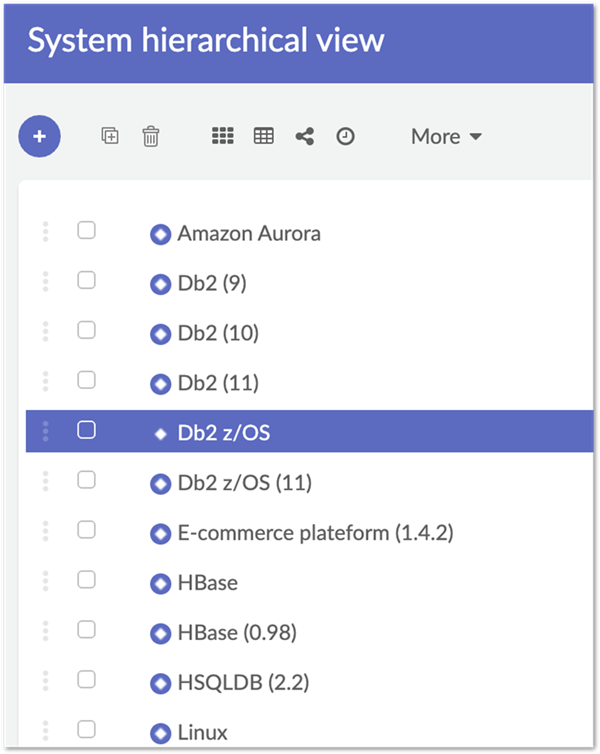Create a system
Overview
In the Technology group of the Main perspective, select Systems to access the system screen. A main page listing all existing systems displays.
If you click on Hierarchy view, you will see a few built-in systems needed for harvesting and provisioning features.
TIBCO Data Virtualization
IBM DB2 (several versions)
HBase (several versions)
HSQLDB
Microsoft Excel
Microsoft SQL Server (several versions)
Oracle MySQL (several versions)
Oracle Database (several versions)
PostgreSQL (several versions)

These built-in systems cannot be deleted as are needed by harvesting & provisioning features. You are able to create other systems and system types, according to your needs.
Create a new system
After clicking on the + icon in the top left corner, you have access to the creation screen. In this screen you have to fill system information.
Create a new stack
A stack is a way to rationalize information system and technical architecture governance by associating different systems together in a structured manner and trying to limit the combinations between them.
In the EBX® Metadata Management application, a stack is defined as a system referencing another system.
To define a new Stack, create a new System using System type = Stack and fill the other System attributes.
Then you have two possibilities to define the stack components
From the Stack itself, in the Stack components tab, associate the components (Systems) of this stack (for instance, a database + an application server and a web server, to define a web application stack)
From each component, in the Stacks tab, associate this component to the wanted stack.